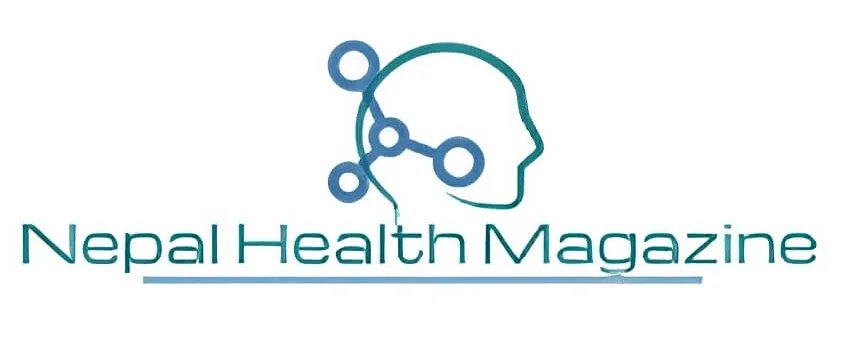National HIV Testing and Treatment Guidelines 2020 [Updated]
In 2017, the National HIV program implemented the “test and treat” policy which provided antiretroviral treatment (ART) to all people living with HIV (PLHIV) regardless of the CD4 counts. Then followed the expansion of the community-based testing with lay provider testing, self- testing and PrEP services for high risk population. At the same time, rapid expansion of viral load testing services, increased HIV testing of the pregnant women, expansion of ART centers further improved the coverage and quality of the HIV care. Explore all the topics of National HIV Testing and Treatment Guidelines 2020 [Updated]
National HIV Testing and Treatment Guidelines 2020 [Updated]
Since the inception of Nepal’s anti-retroviral treatment programme in 2O04, early diagnosis with innovative and quality assured methods, effective drugs and quality health services has been the key to successful HIV program in Nepal. This new National HIV testing and treatment guidelines, 2020 refines the testing strategy for the infants, adults and pregnant, introduces DTG as the first line drugs for all and advocates on rapid initiation of ART. The guidelines also stress on community-based care of PLHIV with differentiated care approach which means less hospital visits for healthy PLHIV and more time to provide for critical patients. Adoption of these new technical and strategic changes will be key to achieve the target for the HIV. This guideline will support the national program, the front-line health workers to provide the best care to the PLHIV in the country.
Table of Contents
HIV testing algorithm for all above 18 months
An HIV testing algorithm describes the combination and sequence of specific assays used for the diagnosis of HIV. A three-test HIV testing algorithm is adopted for Nepal. Test kit selection for different line assays will be based on the WHO prequalification list, diagnostic sensitivity and specificity, antigens used and performance characteristics. The first assay (A1) should be the most sensitive, and the second and third tests should have higher specificity. Assay 1 (A1), Assay 2 (A2) and Assay 3 (A3) should be three different immunological assays that do not share the same false reactivity. The first test used in a serial HIV testing algorithm should be highly sensitive so that all positive samples are identified as positive.


- All individuals are tested on Assay 1 (A1). Anyone with a non-reactive test result (A1−) is reported as HIV negative.
- Individuals who are reactive on Assay 1 (A1+) should then be tested on a separate and distinct Assay 2 (A2).
- Individuals who are reactive on both Assay 1 and Assay 2 (A1+; A2+) should then be tested on a separate and distinct Assay 3 (A3).
- – Report as HIV positive if Assay 3 is reactive (A1+; A2+; A3+).
- – Report as HIV inconclusive if Assay 3 is non-reactive (A1+; A2+; A3−). The individual should be asked to return in 14 days for additional testing.
- • Individuals who are reactive on Assay 1 but non-reactive on Assay 2 (A1+; A2−) should be repeat tested on Assay 1.
- – If repeat Assay 1 is non-reactive (A1+; A2−; repeat A1–), the status should be reported as HIV negative; – If repeat Assay 1 is reactive (A1+; A2–; repeat A1+), the status should be reported as HIV inconclusive, and the individual asked to return in 14 days for additional testing.
HIV Treatment in Adults and Adolescents
Drugs are agents that act on various stages of the life cycle of HIV in the body. These drugs work by interrupting the process of replication of the virus and hence reducing the destruction of CD4 cells, which prevents the progression of HIV infection to acquired immune deficiency syndrome (AIDS). ARVs are categorized according to their mechanism of action.
In 2018, WHO published interim guidelines recommending dolutegravir (DTG)- containing regimens as the preferred first- and second-line ART regimens for PLHIV. An updated systematic review conducted in 2019 to support the guidelines
reaffirmed that a first-line regimen of DTG combined with two nucleoside reverse transcriptase inhibitors (NRTIs) leads to higher viral suppression and lower risk of discontinuing treatment and developing HIV drug resistance compared with efavirenz (EFV)-based regimens among treatment-naive adults. DTG has other advantages over EFV, including lower potential for drug–drug interactions, more rapid viral suppression and a higher genetic barrier to developing HIV drug resistance (HIVDR). DTG is also active against HIV-2 infection, which is naturally resistant to EFV.
This recommendation comes at a time when pretreatment resistance to nonnucleoside reverse-transcriptase inhibitors (NNRTI) is increasing in low- and middleincome countries, creating a demand for access to alternative non-NNRTI ARV drugs. A pretreatment HIVDR study (2016) in Nepal also showed >10% resistance to NNRTIs (nevirapine [NVP] and EFV)
First-line ART regimen for adults, adolescents, pregnant or breastfeeding women
DTG combined with two NRTIs is the preferred first-line regimen . Randomized controlled trials have shown that DTG-based regimens have a faster rate of viral suppression (28 days vs 84 days compared with EFV-based regimens), higher viral suppression ( 88% vs 81% with EFV), higher gains in CD4 count (267 cells vs 208 cells) at 48 weeks after ART initiation, fewer adverse events, lower risk of discontinuing treatment, fewer drug interactions and less chances of developing HIVDR compared with EFV-based regimens among treatment-naive adults. Neural tube defects associated with the use of DTG at conception have been reported in the Tsepamo study. Although low, the prevalence is higher than other ARV drug exposure groups (3 per 1000 deliveries vs 1 per 1000 deliveries). However, risk–benefit models suggest that the benefits of DTG for women of childbearing potential newly initiating ART, which include greater maternal viral suppression, fewer maternal deaths, fewer sexual transmissions and fewer mother-to-child transmissions, are likely to outweigh the risks, such as adult morbidity resulting from DTG- associated weight gain and neonatal deaths among the infants of pregnant women with DTG-associated weight gain. DTG is also predicted to be more cost effective, resulting in more disability-adjusted life years averted at a lower cost than EFV.

DTG in second-line ART
DTG is generally safer and more effective than protease inhibitor (PI)-based second line regimens. For those taking a first-line regimen containing DTG that has failed, a boosted PI-containing regimen should be used

Consideration for transition to TDF + 3TC + DTG among adults and adolescents

Service outlet of HIV services
The National HIV program encourages the community-led responses as a key element of effective health system. Health services delivery in HIV program advocates a client centered approach that consciously adopts the perspectives of individuals, families and communities, and sees them as participants as well as beneficiaries of trusted health systems that supports in making informed decision and play an active role in their own care.
The HIV clinical services are currently provided from following outlets:
ART centres
These are the traditional ART centres attached to a public health facility or hospital. These centres should have facilities to manage adverse events, life-threatening Is with additional clinical and diagnostic services either at the same facility or through referral. They should have provision for providing hospitalized care or have formal linkage with facilities that can provide hospitalization. The centre should provide routine investigations for monitoring of OIs and the effectiveness of ARVs
Community-based ART sites
Community-based ART sites (CB-ART) are stand-alone ART sites, mostly run by CBOs, NGOs staffed with trained medical doctors and health workers to provide ART services to specific KPs and at-risk populations. They provide HIV testing and counselling services, ART initiation, medicine refills and adherence support, and support for PrEP and PEP. HIV services and human resources required are arranged in line with the National Standard Service Package of 2020. These sites should provide linkage with ART centres for managing advanced disease and for routine investigations to monitor treatment of OIs.
ART dispensing sites
ART dispensing sites provide ARV refills through trained health workers. ART dispensing sites are in government-managed health posts, sites approved by the NCASC and in line with national standard operating procedures (SOPs)
View Online
- Webinar on World Hand Hygiene | Register today
 Webinar on World Hand Hygiene | Register today: Each year the WHO’s World Hand Hygiene day aims to maintain a global profile on the importance of hand hygiene in health…
Webinar on World Hand Hygiene | Register today: Each year the WHO’s World Hand Hygiene day aims to maintain a global profile on the importance of hand hygiene in health… - World’s First 5-in-1 vaccine against meningitis | Men5CV
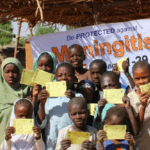 World’s First 5-in-1 vaccine against meningitis | Men5CV:In a historic move, Nigeria has become the first country in the world to roll out a new vaccine (called Men5CV) recommended by…
World’s First 5-in-1 vaccine against meningitis | Men5CV:In a historic move, Nigeria has become the first country in the world to roll out a new vaccine (called Men5CV) recommended by… - World Health Worker Week 2024 | Know theme
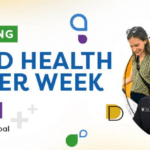 World Health Worker Week 2024 | Know theme:This World Health Worker Week will bring together advocates, health workers, practitioners, leaders, and communities around the world to call for greater funding…
World Health Worker Week 2024 | Know theme:This World Health Worker Week will bring together advocates, health workers, practitioners, leaders, and communities around the world to call for greater funding… - World Autism Awareness Day 2024 | Know theme
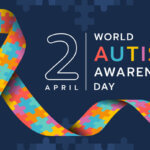 World Autism Awareness Day 2024 | Know theme:Every year, on April 2, the global awareness event of World Autism Day is observed to raise awareness about autism spectrum disorders (ASD).…
World Autism Awareness Day 2024 | Know theme:Every year, on April 2, the global awareness event of World Autism Day is observed to raise awareness about autism spectrum disorders (ASD).… - Staff Nurse | OCH | latest jobs vacancy 2024
 Staff Nurse | OCH | latest jobs vacancy 2024;Okhaldhunga Community Hospital (OCH) is a rural hospital (officially 50 beds), to the east of Kathmandu, one day’s journey by vehicle. We provide…
Staff Nurse | OCH | latest jobs vacancy 2024;Okhaldhunga Community Hospital (OCH) is a rural hospital (officially 50 beds), to the east of Kathmandu, one day’s journey by vehicle. We provide… - World Hepatitis Summit 2024 | WHO
 World Hepatitis Summit 2024 | WHO : The World Hepatitis Summit (WHS) will take place from 9–11 April 2024 in Lisbon, Portugal, under the theme “Integrate Accelerate Eliminate”. WHS is…
World Hepatitis Summit 2024 | WHO : The World Hepatitis Summit (WHS) will take place from 9–11 April 2024 in Lisbon, Portugal, under the theme “Integrate Accelerate Eliminate”. WHS is… - Staff Nurse | TLMN | ngo jobs 2024
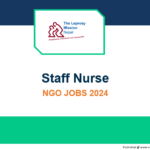 Staff Nurse | TLMN | ngo jobs 2024: TLM Nepal’s FOUND (Fueling Opportunities to end Unemployment for Nepalis with Disability) Project aims to support 2,500 unemployed skilled people with disabilities…
Staff Nurse | TLMN | ngo jobs 2024: TLM Nepal’s FOUND (Fueling Opportunities to end Unemployment for Nepalis with Disability) Project aims to support 2,500 unemployed skilled people with disabilities… - World Health Day 2024 | Know theme
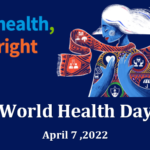 World Health Day 2024 | Know theme: Everyone should have access to the health services they need when and where they need them, without facing financial hardship. So, if you…
World Health Day 2024 | Know theme: Everyone should have access to the health services they need when and where they need them, without facing financial hardship. So, if you…
bachelor jobs bph jobs covid19 health health for all health guidelines new health jobs healthjobs healthjobs in nepal health jobs vacancy health public health update ingo jobs jobs after passing bachelor jobs for bph jobs in nepal jobs in ngo ngo jobs ngo jobs vacancy ngo jobs vacancy for bph ngo job vacancy 2021 nurse jobs nurse jobs 2021 nurse vacancy nursing insurance nursing job nursing jobs nursing jobs 2021 nursing jobs in nepal nursing law nursing officer Nursing Vacancy Public health Public health concern public health important days Public health in Nepal publichealth jobs public health updated Staff Nurse Staff Nurse and HA Vacancy | Nepal Army 2021 staff nurse vacancy staff nurse vacancy in ngo 2021 nepal staff nurse vacancy kathmandu who guidelines WHO official

Hey there, I am Nirdesh Baral, founder of Nepal Health Magazine. I am a Tech geek by passion , Public health practitioner by profession and an Ailurophile by heart and a patriot by birth

